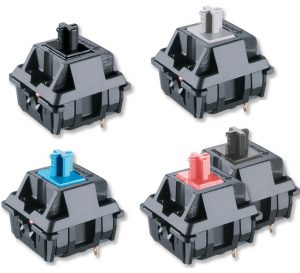Why Choosing the Right Membrane Switch Is Crucial for Your Item Design
Why Choosing the Right Membrane Switch Is Crucial for Your Item Design
Blog Article
Recognizing the Capability of Membrane Layer Changes for User User Interface Instruments
The functionality of membrane switches over represents a considerable innovation in individual interface layout, incorporating efficiency with aesthetic adaptability. As sectors significantly prioritize user experience, comprehending the nuances of membrane layer button technology ends up being crucial.
What Are Membrane Switches?
Membrane layer buttons are cutting-edge user interface devices that assist in individual communication with digital tools. These flexible elements contain numerous layers, consisting of a visuals overlay, spacer, and a published circuit layer. The layout permits for a smooth combination right into various digital tools, boosting both the visual and practical elements of interface.
Membrane layer switches are typically utilized in a wide variety of applications, from home appliances to industrial machinery and medical devices. Their construction generally features a thin account, making them an ideal choice for compact designs. The responsive responses given by these buttons can be crafted to satisfy certain individual preferences, guaranteeing effective interaction in between the individual and the gadget.
Sturdiness is one more significant benefit of membrane switches, as they are resistant to dirt, dampness, and chemicals, which boosts their life-span popular environments. Additionally, these buttons can be personalized in terms of form, size, and visuals style, enabling branding and user-specific attributes. In general, membrane switches stand for a functional service for boosting individual experience in digital devices, incorporating functionality with aesthetic charm in an effective manner.
Just How Membrane Layer Switches Work
Operating on a straightforward principle, membrane layer switches over make use of a split building and construction to register customer input efficiently. Each switch contains numerous layers, including a printed circuit layer, a spacer layer, and a top graphic layer, which are created to collaborate seamlessly. When a customer presses the leading layer, it presses the spacer layer, bringing the conductive aspects of the circuit layer right into call with each various other.
This contact produces a shut circuit, signaling the gadget to execute a particular feature. The design enables for different arrangements, including tactile comments, which can boost the user experience by offering a physical feeling upon activation. The products used in membrane switches usually consist of flexible substrates, such as polyester or polycarbonate, which make sure sturdiness and strength versus damage.

Trick Advantages of Membrane Layer Buttons

One more significant benefit is their density. Membrane layer switches are slim and lightweight, which makes it possible for producers to save area in their devices without giving up capability. This feature is particularly useful in applications where weight and quantity are critical considerations.
Additionally, membrane switches are resistant to dirt, moisture, and chemicals, enhancing their sturdiness. This strength expands their life expectancy and reduces the need for regular replacements, causing expense savings in time.
Furthermore, the tactile responses provided by membrane layer switches can be maximized to enhance user communication. They can consist of features such as increased buttons or distinct clicks, boosting functionality and user experience.
Applications Throughout Industries
Interface tools using membrane switches are widespread in a large range of sectors, showcasing their adaptability and performance. Membrane Switch. In the medical sector, membrane layer switches are essential to tools such as diagnostic equipment and client tracking systems, where their durability and ease of cleansing are crucial for Membrane Switch preserving health requirements. In a similar way, in the vehicle market, these buttons are utilized in control panel controls and infotainment systems, supplying a sleek and modern-day user interface for customers.
Additionally, the consumer electronics market take advantage of membrane layer buttons in home appliances and handheld devices, where portable layout and user-friendly user interfaces improve user experience. Industrial applications also leverage membrane layer changes for control panels in machinery and automation systems, emphasizing their toughness and find out here resistance to harsh settings.
In the aerospace and defense industries, membrane buttons are utilized in cockpit controls and equipment, where dependability and efficiency under extreme problems are paramount. Additionally, the pc gaming industry increasingly incorporates membrane buttons in controllers and game equipments, adding to an appealing user experience. Overall, the flexibility of membrane switches over allows their prevalent use across numerous great site industries, highlighting their relevance in contemporary individual interface layout.
Future Trends in Membrane Layer Switch Technology

Furthermore, the use of sophisticated materials, such as polycarbonate and polyester films, is anticipated to rise, providing improved toughness and resistance to environmental stressors. These products add to the overall long life of membrane layer switches, making them suitable for harsher commercial applications.
In addition, the incorporation of clever technology, consisting of IoT connectivity, will allow membrane switches to interact with other gadgets and systems, facilitating a much more interactive individual experience. This trend aligns with the growing need for wise devices throughout numerous markets, from medical care to customer electronic devices.
Last but not least, modification choices are anticipated to broaden, enabling makers to produce bespoke remedies customized to details customer needs and choices. These developments will certainly place membrane layer switches as vital components in the advancement of individual interface modern technology.
Conclusion
Finally, membrane layer changes stand for a pivotal innovation in customer interface technology, using a trustworthy and versatile option for diverse digital applications. Their layered building helps with small style, while attributes such as responsive responses enhance individual communication. The sturdiness against environmental aspects further solidifies their energy throughout several markets. As developments in product science and touch noticing technologies continue, the functionality and applicability of membrane buttons are anticipated to broaden, strengthening their value in modern digital gadgets.
Report this page